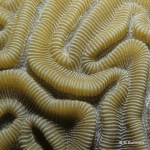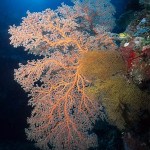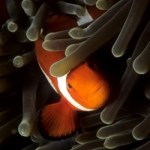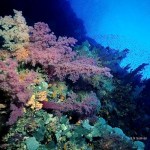Corals
Those of you who follow me on twitter have been flooded with links about the recent United Nations meeting which included a once-every-three-years Conference of the Parties for the Convention on International Trade in Endangered Species of Wild Fauna and Flora (CITES). As a biologist, I take conservation issues quite seriously, especially when it comes to regulations. I feel that large scale efforts are not just important, they are necessary to protect species from overexploitation. Up on the slab were a number of key regulations for a variety of species, and I anxiously awaited the results…
This article is reposted from the old Wordpress incarnation of Not Exactly Rocket Science. The blog is on holiday until the start of October, when I'll return with fresh material.
Every month, at the full moon, tourists and students gather on the beach at Koh Phangan, Thailand for a night of booze, dancing, and debauchery. But the moon-themed antics of these party-goers look positively tepid when compared to those of the Great Barrier Reef's corals. With the help of two genes and a spot of moonlight, the corals synchronise one of the greatest spectacles of the natural world - a mass annual…
Scleractinian corals, also known as stony corals -- or just hard corals -- are the primary reef builders in the oceans. Their polyps secrete calcium carbonate to form a skeleton. A minority of species live as single polyps, but most stony coral species are colonial, and the structures they build 'grow' over time. They form a myriad of shapes: mounds, branches, fingers, plates, and encrustations.
In several previous posts I discussed and displayed photos of a number of so-called soft corals, all of which are octocorals, i.e., their polyps have eight tentacles. Stony corals are…
Sea fans are among the most beautiful sights seen by divers. Gorgonian sea fans are Cnidarians that build colonies in branching formations that usually are fan-shaped, thus the common name.
Like the Nephtheid soft corals I wrote about recently here on Photo Synthesis, Gorgonians are octocorals: each polyp has eight pinnate tentacles which it uses to capture nutrients suspended in the water column. They are seen most often on reef crests, or jutting out from drop-offs or steep banks in locations where natural currents will sweep plankton and other organic nutrients across the polyps'…
Many animals in the ocean seek shelter from predators by living on or among other animals. Among fishes, members of the Damselfish family (Pomacentridae) often seek protection this way. Some of these relationships also are commensal or even symbiotic.
One of the most well known symbiotic relationships in the marine world is that between anemones and fishes commonly known as 'clownfish' or 'anemonefish'. Clownfish form a subfamily, Amphiprioninae, of the Dameselfish family. Each of the twenty-some species in this subfamily lives symbiotically with one or more anemone species.
Both the…
It is probably safe to say that when most people think of colorful things in the sea, tropical reef fishes come to mind first, followed perhaps by nudibranchs or sea stars. While most reef fishes, nudibranchs and sea stars are not only colorful but beautifully patterned, as a photographer, my favorites among colorful things in the sea are soft corals of the family Nephtheidae -- especially those of the genus Dendronephthya. They come in an incredible array of hues and color combinations, ranging from soft pastels to brilliant reds and golds.
Nephtheids are plentiful on tropical reefs…
In 2005, corals in the large reef off the coast of Florida were saved by four hurricanes. Tropical storms seem to be unlikely heroes for any living thing. Indeed, coral reefs directly in the way of a hurricane, or even up to 90km from its centre, suffer serious physical damage. But Derek Manzello from the National Oceanic and Atmospheric Administation has found that corals just outside the storm's path reap an unexpected benefit.
Hurricanes can significantly cool large stretches of ocean as they pass overhead, by drawing up cooler water from the sea floor. And this cooling effect,…
It's not a good time for corals. Last year, a third of coral species went straight into the endangered lists after being assessed for the first time, and it looks like 2009 isn't going to bring any reprieves to the doom and gloom. In particular, a new study provides hard evidence that the mightiest of coral super-colonies - the Great Barrier Reef - is in trouble.
Like reefs across the world, the Great Barrier Reef faces many threats, including pollution, physical destruction, predatory starfish and perhaps most importantly, the many effects of climate change. Glenn De'ath and colleagues from…
Climate change is not just about surface warming and glacial melting. The carbon dioxide that human activity is pumping into the atmosphere also dissolves in the world's oceans, slowly increasing their acidity over time. And that spells trouble for corals.
Corals may seem like immobile rock, but these hard fortresses are home to soft-bodied animals. These creatures - the coral polyps - build their mighty reefs of calcium carbonate using carbonate ions drawn from the surrounding water. But as the water's pH levels fall, these ions become depleted and the corals start to run out of…
A complete ban on fishing can save coral reef communities in more ways than one. A few weeks ago, I blogged about a study which found that the coral trout, a victim of severe overfishing, was bouncing back in the small regions of the Great Barrier Reef where fishing has been totally forbidden. It certainly makes sense that fish will rebound when fishing ceases, but a new study reveals that the bans have had more indirect benefits - they have protected the corals from a predatory starfish.
The crown-of-thorns starfish (Acanthaster planci) is a voracious hunter of corals and a massive problem…
If you've never had the pleasure of swimming among a coral reef, you might want to get your chance sooner rather than later. Yesterday, the journal Science published the first comprehensive global assessment of the status of the world's reef-building corals, and it's results don't make for comforting reading. Almost a third of the 700-plus species surveyed face extinction; no group of land-living species, except possibly for the amphibians, are this threatened.
A team of 39 scientists led by Ken Carpenter, director of the Global Marine Species Assessment gauged the extinction risk faced by…



